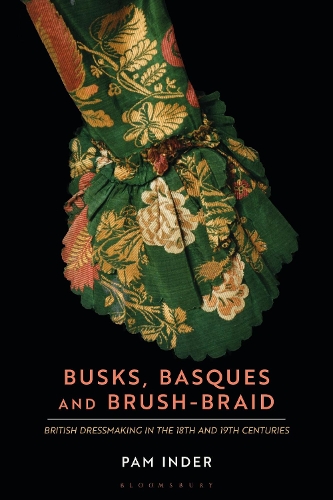
Busks, Basques and Brush-Braid: British dressmaking in the 18th and 19th centuries
(Paperback)
Publishing Details
Busks, Basques and Brush-Braid: British dressmaking in the 18th and 19th centuries
By (Author) Dr Pam Inder
Bloomsbury Publishing PLC
Bloomsbury Visual Arts
27th January 2022
United Kingdom
Classifications
Tertiary Education
Non Fiction
History of art
Cultural studies: dress and society
Fashion and beauty industries
Social and cultural history
338.476871120941
Physical Properties
Paperback
340
Width 156mm, Height 234mm
472g
Description
The dressmaking trade developed rapidly during the 18th and 19th centuries, changing the lives of thousands of British workers. Busks, Basques and Brush-Braid focuses on the trade and the people within it, from their working conditions and earnings to their training, services and relationships with customers. Exploring the lives of dressmakers in fact and fiction, the book looks at representations of the trade in the plays and novels of the time, while surveying the often harsh realities of the workers lives. From the arrival of the sewing machine to the influence of the department store, it explores the impact of mechanization, commercialization and modernity on a historical trade. Pamela Inder illuminates a new world of dressmaking enabled by goods like paper patterns and magazines, and sets out to investigate the increasing monopoly of female dressmakers in an industry once dominated by male tailors. Drawing on a range of original and hitherto unpublished sources including business records, diaries, letters, bills and newspaper articles Busks, Basques and Brush-Braid reveals the untold story of the dressmaking trade. Beautifully illustrated with over 80 images, the book brings dressmakers into focus as real people, granting new insights into working class life in 18th- and 19th-century Britain.
Reviews
[Busks, Basques and BrushBraid] is unique in that it discusses a variety of topics; within the specific subject matter of dressmaking, that have not been previously researched and presented so thoroughly ... This book is recommended for anyone interested in dress history, eighteenth and nineteenth century society, or those wanting to expand their knowledge of issues of the period. * The Journal of Dress History *
This is a beautifully researched and compelling text that draws the reader into the world of the 18th- and 19th-century dressmaker. Numerous though they were, the work of these seamstresses has been, until now, a hidden history. Pam Inder shines a light into the shadows of their workrooms in this important study. * Kate Strasdin, Falmouth University, UK *
This study is a treasure of detailed research from primary sources: it ably illustrates a long-standing gig economy for women, and evidences their individual humanity, through the amazing detail of their lives and work. * Jean L. Druesedow, Kent State University Museum, USA *
This comprehensive study ... It is undoubtedly a social history of these women and their lives. ... there is certainly something powerful about giving voice to women otherwise nameless and largely forgotten. * Cultural and Social History: The Journal of the Social History Society *
Author Bio
Pam Inder is an independent scholar and was formerly Curator of Applied Arts at first Exeter and then Leicestershire Museums (specialising in dress history), after being an Assistant Curator at Birmingham City Art Gallery. She later taught at Staffordshire and De Montfort Universities.
